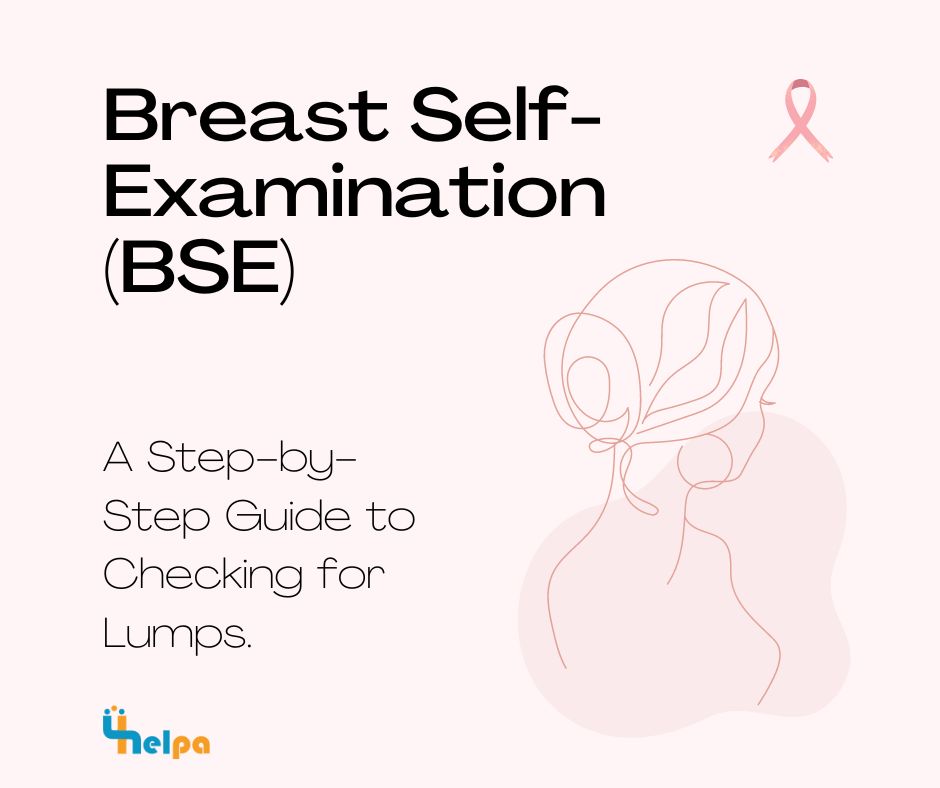
What is Breast Self-Examination (BSE)?
A breast self-exam is a simple step-by-step method to examine your breasts, helping you become familiar with their normal look and feel. This self-check enables you to detect any changes or abnormalities.
By regularly examining your breasts using a step-by-step method, you’ll become more aware of their normal appearance and feel, making it easier to notice any differences. Performing a breast self-exam is a simple and effective way to increase breast awareness.
While mammograms remain the best screening tool for detecting breast abnormalities, healthcare providers recommend breast self-exams as a valuable complement. By doing self-exams at home, you’ll become expertly familiar with your breasts, empowering you to seek medical attention if you notice anything unusual.
Why Regular Breast Self-Exams Matter
-Familiarize yourself with your breasts: Breast self-exams help you understand the typical look and feel of your breasts, making it easier to notice changes.
-Detect changes and abnormalities: Regular self-exams enable you to identify differences in your breasts, such as lumps, swelling, or discharge.
-Early detection of breast cancer: 1 in 8 women develop breast cancer. Breast self-exams can help detect breast cancer, especially in cases where mammograms may miss small cancers or those in hard-to-see areas.
-Monitor breast health between mammograms: Report any changes to your healthcare professional, even if you’ve recently had a mammogram or have one scheduled soon.
-Identify potential issues: Breast self-exams can help identify conditions other than breast cancer, such as fibrocystic breasts, cysts, or infections.
-Improve breast cancer survival rates: Detecting breast cancer early increases survival rates; self-exams complement mammograms in early detection.
-Empower yourself with breast awareness: Knowing your breasts’ usual look and feel enables you to take control of your breast health and seek medical attention when needed.
How Often to Perform a Breast Self-Exam
Healthcare experts recommend performing a breast self-exam (BSE) once a month. While BSEs may not be foolproof for detecting breast cancer, they remain an easy and simple tool for maintaining breast health at home. Some tips for effective monthly breast self-exams include;
– Choosing a consistent date (e.g., the same day each month)
– Performing the exam 7-10 days after your period (hormonal changes can affect breast texture)
– Take your time and be thorough.
Step-by-Step Guide to Breast Self-Examination
Method 1: Visual Exam in Front of a Mirror
- Stand in front of a mirror, removing your shirt and bra.
- Put your arms down by your sides.
- Mentally divide your breast into four and apply pressure while massaging. Look out for changes in:
- Breast shape
- Irregular swelling
- Dimpling in the skin
- Changes in size
- Change in texture
- Presence of lumps
- Nipple discharge
- Nipple retraction
- Nipple deviation
- Raise your arms high over your head and repeat step 3.
- Put your hands on your hips and press firmly to flex your chest muscles.
- Repeat step 3.
Method 2: Manual Breast Self-Exam While Standing
- Remove your shirt and bra.
- Use your right hand to examine your left breast.
- Use the pads of your three middle fingers to press on every part of your breast.
- Apply light pressure, medium pressure, and firm pressure
- Feel for lumps, thick spots, and other changes
- Use a circular pattern to ensure thorough coverage.
- Press the tissue nearest your armpit.
- Check under your areola (area around your nipple), then squeeze your nipple to check for discharge.
- Repeat steps 2-8 on the other breast.
Method 3: Manual Breast Self-Exam While Lying Down
- Lie down and put a pillow under your right shoulder.
- Place your right arm behind your head.
- Using your left hand, apply the same technique as Method 2.
- Press all parts of your breast tissue and under your armpit.
- Check under your areola and then squeeze your nipple to check for discharge.
- Swap the pillow to the other side and repeat steps 1-5 for your other breast.
In addition, you should check your armpits and collarbone.
What to Do If You Find Something Concerning
– Report changes to your healthcare professional immediately.
– Undergo recommended imaging tests, such as diagnostic mammograms or ultrasounds.
Takeaway
Discover breast changes early with a simple home self-exam. Regular checks help you stay on top of breast health, detect potential issues before they become serious, and catch cancer early when treatment is most effective.
Most breast lumps aren’t cancerous, but it’s essential to share any changes with your healthcare provider. Remember, 1 in 8 women develop breast cancer, and early detection improves survival rates.
Take control of your breast health by performing monthly self-exams, knowing your body, and recognizing changes. Consult your provider with any concerns because early detection saves lives.
Do you know anyone struggling to cover their medical bills? Introduce them to Helpa, the best medical crowdfunding app for Nigerians and by Nigerians.
